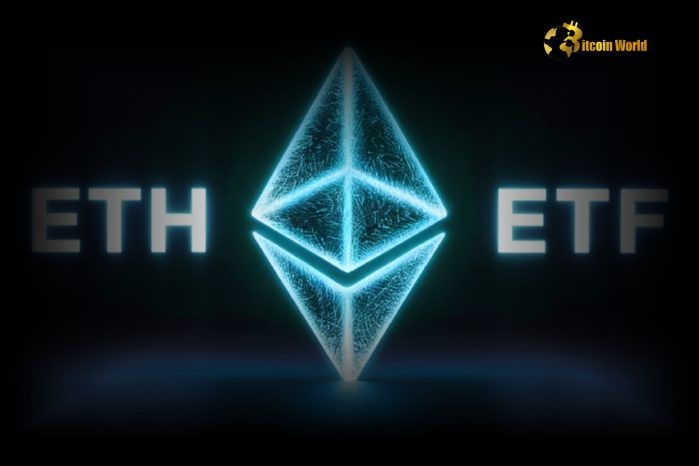
The crypto world is advancing fast and some innovative projects are pushing the limits of what blockchain can do. Ripple (XRP) is making global payments faster and cheaper, Ethereum (ETH) continues to lead in smart contracts and DeFi, and Avalanche (AVAX) is improving blockchain scalability with cutting-edge upgrades. On the other hand, PlutoChain ($PLUTO) might tackle Bitcoin’s biggest frustrations. As a hybrid Layer-2 solution, it could speed up transactions, cut fees, and even bring DeFi and NFT support to Bitcoin. Here’s a closer look at each project. PlutoChain ($PLUTO): The Hybrid Layer-2 Project that Could Make Bitcoin Faster, Cheaper, and More Versatile Bitcoin is a game-changer, but it’s not the easiest to use for everyday transactions. Slow speeds, high fees, and a lack of flexibility make it impractical for quick payments or small purchases. PlutoChain ($PLUTO) is a Layer-2 solution designed to potentially make Bitcoin faster, cheaper, and more efficient. This innovative project offers block times of just 2 seconds on its Layer-2 network, which could make instant payments and global transfers a reality, and would be a huge improvement compared to Bitcoin’s 10-minute block times. Lower fees are another big win. Right now, Bitcoin’s transaction costs can be too high for everyday purchases, but PlutoChain could reduce these fees and make crypto payments more practical for businesses and users. But it’s not just about payments — PlutoChain also supports DeFi, NFTs, and AI-powered blockchain projects thanks to Ethereum Virtual Machine (EVM) compatibility . This could create new use cases for Bitcoin beyond just being a store of value. To ensure high-level security, PlutoChain has been audited by SolidProof , QuillAudits , and Assure DeFi , with ongoing testing to keep the network safe and reliable. Scalability is another major advantage. In testing, PlutoChain handled over 43,200 transactions in a single day without any slowdowns, which proves it’s built for high demand. Unlike Bitcoin, where miners and developers control upgrades, PlutoChain puts power in the hands of its users and encourages them to propose and vote on changes. Ripple (XRP): The Institutional Choice for Fast and Cost-Effective Global Settlements XRP is currently trading at around $2.50, with a 24-hour trading volume of $3.93 billion. Over the past day, its price has climbed 3.09%, which means XRP is gaining momentum. Ripple recently partnered with Unicâmbio, a Portuguese currency exchange provider, to enable instant cross-border payments between Portugal and Brazil using Ripple Payments. On the legal front, Ripple scored a major win after the SEC dropped charges against its executives. Meanwhile, Ripple launched its own stablecoin, Ripple USD (RLUSD), now available on global exchanges. Crypto analyst Random Crypto Pal , who once predicted XRP would plummet to zero, now believes it could soar to $20-$24 in this bull run. Ethereum (ETH): Leading Smart Contract Platform Amid Market Shifts Ethereum continues to shape the future of blockchain and DeFi. However, hedge funds have recently increased their short positions on ETH by 500% since November 2024 , which means there’s a rise in bearish sentiment among institutional investors. Despite this, Ethereum remains a powerhouse in Web3 development, especially with the growth of Layer 2 solutions designed to make transactions faster and cheaper. The latest “Dencun” upgrade, launched in March 2024, has significantly lowered transaction fees on Ethereum’s Layer 2 networks. Crypto analyst Wolf suggests that Ethereum’s price is being suppressed for accumulation and predicts a breakout to $4K by February, rapid gains in March and April, followed by a brief correction before surging to $9.5K–$10K. Avalanche (AVAX): Redefining Blockchain Speed with Subnets and Institutional Adoption The Avalanche Foundation recently launched Avaissance, a program designed to support NFT artists through an Artist in Residence initiative and a curated art project called Mona Lisa. In the DeFi world, Avalanche continues to expand by helping Web3 grow with its fast and scalable ecosystem. Recent developments focus on improving efficiency and reducing transaction costs. Another major upgrade, Avalanche9000, has slashed deployment costs and C-Chain fees by over 90%, which makes dApps more affordable and accessible. Crypto analyst Froggy believes Avalanche has rebounded from key support, with the RSI signaling a potential 166% rally toward $60. Final Words Ripple is reshaping cross-border payments, Ethereum leads in DeFi, and Avalanche is pushing blockchain speed with its subnet technology. However, PlutoChain ($PLUTO) could make Bitcoin faster, cheaper, and more versatile with 2-second block times, lower fees, and EVM compatibility. With PlutoChain , Bitcoin could become practical for everyday use while expanding into DeFi and NFTs. ——- This article is purely informational and should not be interpreted as financial advice. Readers are encouraged to carry out their own due diligence. Predictions involve risk and may not undergo updates. Disclosure: This is a sponsored press release. Please do your research before buying any cryptocurrency or investing in any projects. Read the full disclosure here .
NullTx
You can visit the page to read the article.
Source: NullTx
Disclaimer: The opinion expressed here is not investment advice – it is provided for informational purposes only. It does not necessarily reflect the opinion of BitMaden. Every investment and all trading involves risk, so you should always perform your own research prior to making decisions. We do not recommend investing money you cannot afford to lose.
Surprising Ethereum (ETH) Analysis: 4 Reasons Why a Price Rebound is Imminent

Ethereum (ETH), the second-largest cryptocurrency by market capitalization, has been navigating a complex market landscape recently. Despite facing headwinds like increased token supply and a dip in staking ratios, a recent analysis from CryptoQuant paints a surprisingly optimistic picture. Could ETH be significantly undervalued, poised for a dramatic price rebound? Let’s delve into the insightful analysis that suggests just that, uncovering the key factors that could trigger a bullish resurgence for Ethereum. If you’re watching the crypto markets closely, especially Ethereum’s movements, this analysis reveals potential opportunities you won’t want to miss. Is Ethereum Truly Undervalued at Current Prices? According to CryptoQuant’s analysis, a primary indicator of Ethereum’s potential lies in comparing its market price to its realized price. The realized price essentially represents the average price at which all ETH tokens were last moved on the blockchain. Currently, ETH’s realized price sits around $2,200, significantly lower than its market price hovering around $2,600. This discrepancy is a powerful signal. It suggests that, on average, ETH holders are currently sitting on unrealized profits. Historically, when market prices are substantially above realized prices, it often indicates that an asset is undervalued . Think of it like this: the ‘fair value’ based on past transactions is lower than what the market is currently valuing ETH at. This gap can be a strong foundation for future price appreciation. To illustrate, consider a scenario outside of crypto. Imagine a house in your neighborhood. If similar houses recently sold for an average of $300,000 (realized price), but the current market value of comparable houses is around $350,000 (market price), the house could be considered undervalued and ripe for further price increases as the market catches up to its intrinsic value. This analogy helps understand the fundamental concept of Ethereum being undervalued based on realized price analysis. Why is Growing ‘Permanent Owner’ ETH Holdings a Bullish Sign? Another compelling factor supporting a potential price rebound for Ethereum is the increasing amount of ETH held by ‘permanent owners.’ These are long-term holders who are less likely to sell their ETH during short-term price fluctuations. Think of them as the bedrock of the Ethereum market, providing stability and reducing sell-side pressure. The growth in holdings by these permanent owners is significant because it signals a strong belief in Ethereum’s long-term value proposition. As more ETH gets locked away in these long-term wallets, the circulating supply effectively decreases. This scarcity, coupled with consistent or increasing demand, can create a powerful upward pressure on price. It’s basic supply and demand economics at play. Here’s a breakdown of why this trend is beneficial: Reduced Volatility: Permanent holders are less prone to panic selling during market dips, thus dampening price volatility. Supply Squeeze: As more ETH is held long-term, the available supply for trading reduces, potentially driving prices up. Stronger Market Foundation: A larger base of long-term holders indicates a more mature and confident market. Imagine a company with a large portion of its shares held by institutional investors with a long-term outlook. This scenario is often viewed positively by the market because it suggests confidence in the company’s future and reduces the likelihood of drastic price swings. Similarly, the growth of permanent ETH owners acts as a strong foundation for future Ethereum price rebound . Decreased Futures Market Selling Pressure: A Shift in Sentiment? The futures market provides valuable insights into market sentiment. CryptoQuant’s analysis points to a notable decrease in selling pressure within the Ethereum futures market. This is a significant shift and a potential indicator of strengthening bullish momentum. In futures trading, ‘selling pressure’ is often reflected in metrics like negative funding rates or a high number of short positions. A decrease in this pressure suggests that traders are becoming less bearish (or more bullish) on Ethereum’s future price. This can be driven by various factors, including: Profit Taking on Shorts: Traders who were previously shorting ETH might be closing their positions, reducing sell pressure. Increased Long Positions: A decrease in selling pressure could also mean more traders are opening long positions, betting on a price rebound . Shifting Market Sentiment: Overall market sentiment towards Ethereum might be turning more positive, encouraging buying rather than selling in the futures market. This shift in the futures market is like observing the weather vane changing direction. It suggests a potential change in the prevailing winds of market sentiment, hinting at a possible upward trajectory for Ethereum. When combined with other positive indicators, decreased selling pressure in futures markets strengthens the case for an impending ETH price rebound . Institutional Investors Accumulating ETH: The Smart Money is Moving In? Perhaps one of the most compelling reasons for optimism is the increasing accumulation of ETH by major institutional investors. CryptoQuant highlights BlackRock and Cumberland as key examples of institutions that have been actively increasing their Ethereum holdings during recent price dips. Institutional investment is often considered a strong validation signal in the crypto market. These entities typically conduct thorough due diligence and have a longer-term investment horizon. When giants like BlackRock and Cumberland increase their ETH holdings, it suggests a strong belief in Ethereum’s future potential and its ability to deliver substantial returns. Why is institutional investment so crucial for an Ethereum price rebound ? Benefit of Institutional Investment Explanation Large Capital Inflows Institutions bring significant capital into the market, driving up demand and potentially prices. Increased Legitimacy Institutional participation enhances the legitimacy and maturity of the crypto market, attracting further investment. Long-Term Perspective Institutions often have a longer-term investment horizon, providing stability and reducing short-term volatility. Positive Market Signal Institutional buying activity is often interpreted as a positive signal by the broader market, encouraging retail and other investors to follow suit. The fact that major players like BlackRock and Cumberland are accumulating ETH during market dips is a powerful vote of confidence. It suggests that these institutions see the current prices as attractive entry points and are positioning themselves for potential future gains. This institutional investment is a crucial pillar supporting the thesis of an upcoming ETH price rebound . Navigating Sideways Movement and Macroeconomic Factors While the analysis points to strong underlying bullish factors for Ethereum, it’s important to acknowledge the potential for sideways price movement in the short term. Macroeconomic conditions, such as inflation, interest rate hikes, and global economic uncertainty, can exert downward pressure on all asset classes, including cryptocurrencies. Therefore, while the fundamental indicators suggest a strong potential for an Ethereum price rebound , external macroeconomic factors could lead to continued volatility and sideways price action in the immediate future. Investors should be prepared for potential market fluctuations and exercise caution while remaining optimistic about the longer-term prospects for ETH. Conclusion: Is Ethereum Primed for a Powerful Rebound? The CryptoQuant analysis presents a compelling case for Ethereum being significantly undervalued and poised for a price rebound . The combination of a lower realized price, increasing permanent owner holdings, decreased futures market selling pressure, and strong institutional accumulation paints a bullish picture. While macroeconomic headwinds might introduce short-term volatility, the underlying fundamentals suggest that Ethereum has strong potential for upward trajectory in the near future. For investors looking at the crypto market, particularly Ethereum, these factors offer a glimmer of hope and a potential opportunity to capitalize on what appears to be an undervalued asset. Keep a close watch on these indicators, and you might just witness the surprising Ethereum price rebound unfold. To learn more about the latest crypto market trends, explore our article on key developments shaping Ethereum institutional adoption. NullTx

Whale Accumulates 97,509 ETH Worth $2.6 Billion Amidst DeFi Transfers from Binance
In a significant development within the blockchain space, recent data from Spotonchain reveals a **substantial transfer of Ethereum (ETH)** by a notable whale. Over a span of two days leading NullTx











